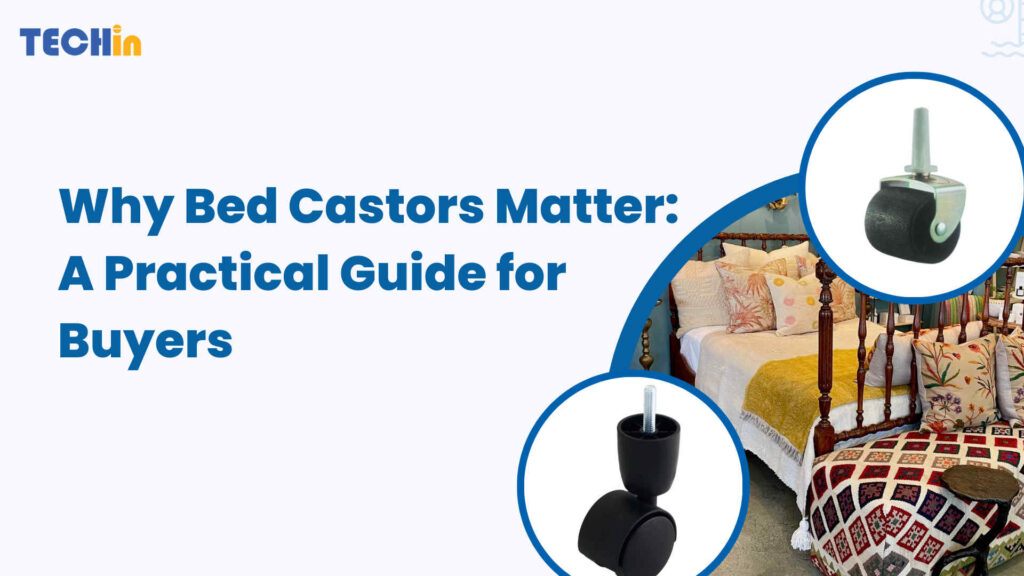1. Introduction
Moving a heavy bed can be a real pain, especially if you’re worried about damaging your floors or if it’s just plain hard to do. Bed casters are the answer. They make it easy to move your bed, protect your floors, and keep your bed stable. But they’re not just functional. Vintage bed casters, for example, look cool and add a nice decorative touch. That’s why they’re so popular with people who care about design.
In this guide, I’ll show you how to choose, install, and take care of bed casters.
2. What Are Bed Castors?
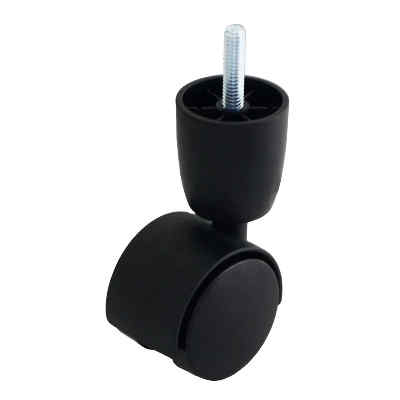
Bed casters are wheels that you put on your bed frame. They make it easier to move your bed, protect your floors, and keep your bed stable. Bed casters are small, strong wheels that are made just for beds. They’re usually made to last a long time, and some of them even have brakes. Bed casters are different from regular wheels because they’re made to hold up heavy beds and keep you safe.
3. Types of Bed Castors
3.1 Roller Wheel Bed Castors
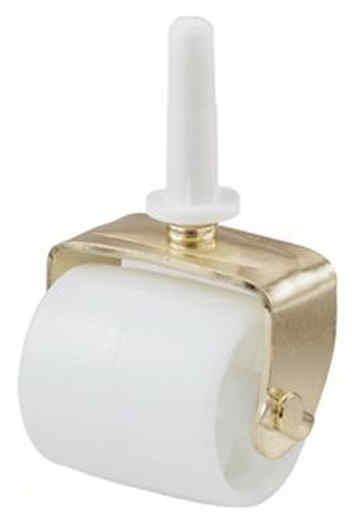
- The most common type, featuring a single roller wheel for straightforward movement.
- Ideal for lightweight to medium-weight beds and works well on hard floors like tile or hardwood.
- Affordable and easy to install, making them a popular choice for standard bed frames.
3.2 Twin Wheel Bed Castors
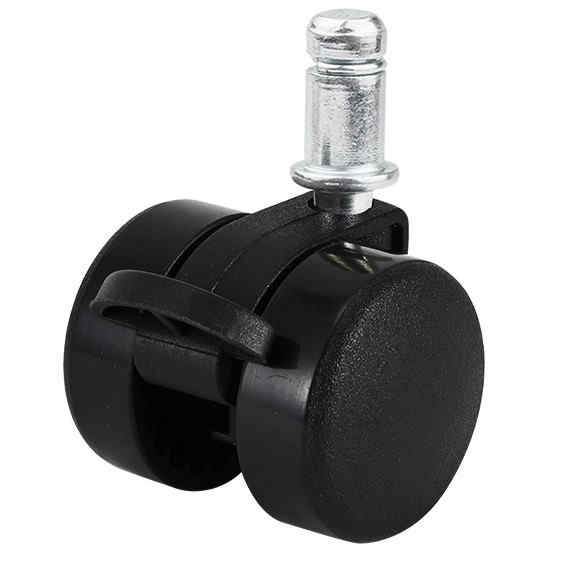
- Feature two wheels that distribute weight evenly, reducing stress on flooring and enhancing durability.
- Excellent for heavier beds like king or queen-sized frames, ensuring stability and smooth mobility.
- Ideal for a range of floor types, including both carpets and hard floors.
3.3 Ball Bed Castors
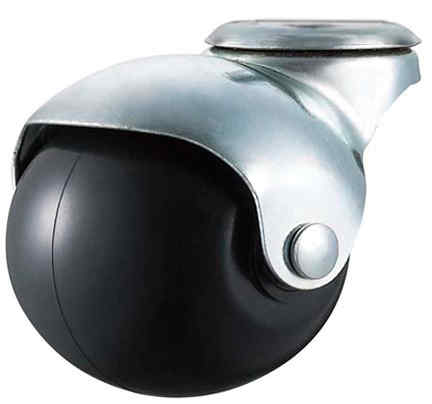
- Designed with a spherical wheel that enables smooth, multidirectional movement.
- A great option for tight spaces where precise maneuvering is required, such as studio apartments or compact bedrooms.
- Often paired with modern or minimalist bed frames for both functionality and style.
3.4 Vintage Bed Castors
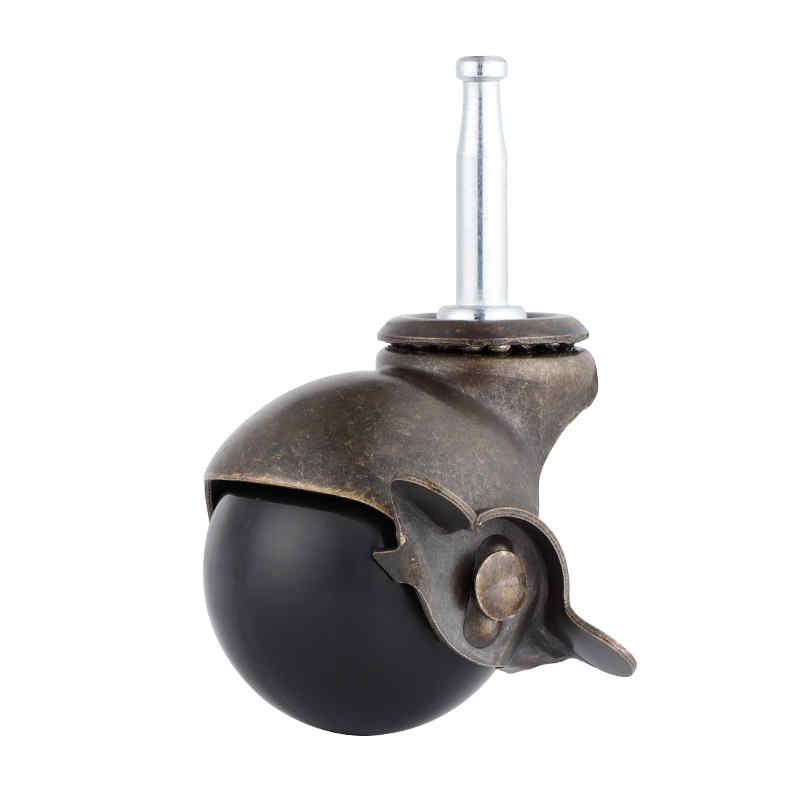
- Combine functionality with decorative appeal, often featuring ornate designs or unique materials like brass or wood.
- Perfect for antique or vintage-style bed frames, adding a touch of elegance to traditional or rustic decor.
- Typically better suited for lighter beds or beds used primarily for aesthetic purposes, as they may lack the durability of modern castors.
4. Advantages of Bed Castors

Bed castors provide a range of benefits that enhance both functionality and convenience. Here’s why they’re an essential addition to any bed frame:
4.1 Enhanced Mobility
- Bed castors make it easy to move even the heaviest beds. Whether you’re cleaning, rearranging your space, or accessing storage, castors allow for smooth, hassle-free movement.
- This mobility is particularly helpful in multi-functional spaces, such as studio apartments or guest rooms.
4.2 Floor Protection
- Unlike dragging furniture, which can cause scratches or gouges, castors are designed to glide across surfaces without damaging them.
- Materials like rubber and polyurethane are gentle on delicate flooring, while hard nylon is effective for soft surfaces like carpets.
4.3 Effortless Cleaning Access
- Cleaning under a bed can be tedious without mobility. Castors allow you to quickly roll the bed aside, providing easy access for vacuuming or sweeping.
4.4 Stability and Safety
- Many bed castors feature locking mechanisms to keep the bed securely in place when not in use. This is especially useful in households with children, pets, or uneven flooring.
4.5 Aesthetic Appeal
- Vintage bed castors provide more than just utility, offering an elegant touch to bedroom decor. Their intricate designs can elevate the look of traditional or rustic spaces.
4.6 Versatility for Different Environments
- Bed castors can be customized for specific needs, such as soft surfaces, hard floors, or mixed environments. This makes them ideal for residential, commercial, and hospitality settings.
4.7 Increased Bed Longevity
- The reduced strain on a bed’s frame and legs—thanks to the smooth rolling action of castors—can help preserve the structural integrity of the furniture.
5. Why Bed Castors Outperform Alternatives
Bed castors are often compared to alternative solutions like stationary legs, glides, or general-purpose casters. Here’s why they stand out:
5.1 Purpose-Built for Beds
- Unlike general-purpose casters, bed castors are engineered specifically for the weight, size, and use of beds. They handle heavier loads without compromising stability, making them a superior choice for this application.
5.2 Optimized Design for Stability
- While furniture glides are static and prone to slipping, bed castors feature locking mechanisms that keep the bed stationary when required. This is crucial for safety and comfort, especially in adjustable or hospital-style beds.
5.3 Compatibility with Flooring Types
- Glides and stationary legs often perform poorly on carpets or soft floors, where they can snag or sink. In contrast, bed castors are versatile, offering materials like rubber for hard floors and nylon or metal for carpets.
5.4 Ease of Movement Without Damage
- Moving furniture with stationary legs or glides often risks scratching or denting floors. Bed castors reduce this risk by providing smooth, rolling mobility tailored to floor types.
5.5 Added Safety Features
- Alternatives like glides or standard legs lack the safety features offered by bed castors. For example, locking mechanisms on castors ensure the bed remains stationary, preventing movement during use—a feature that’s especially important for homes with children or in professional settings like hotels.
6. Common Materials Used in Bed Castors
6.1 For Hard Floors (e.g., Hardwood, Tile, Laminate)
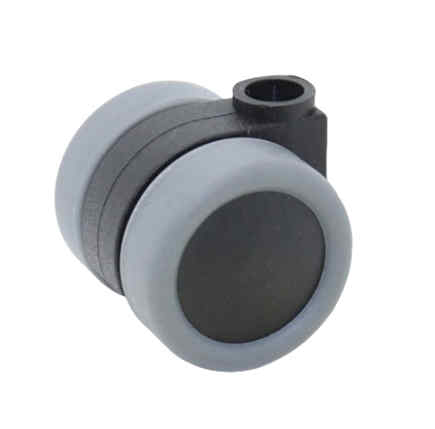
- Rubber: Soft, non-marking, and noise-dampening. Best for delicate surfaces.
- Polyurethane: Durable and versatile, resistant to wear and chemicals.
- Soft Nylon: A budget-friendly choice, though less protective than rubber.
6.2 For Soft Surfaces (e.g., Carpet, Rugs)

- Metal (Chrome/Steel): Ensures smooth rolling on carpets, resistant to sinking into fibers.
- Hard Nylon/Polypropylene: Lightweight and durable, ideal for low-pile carpets.
7. Factors to Consider When Selecting Bed Castors
Choosing the right bed castors involves evaluating both external conditions (like flooring) and the specific features of the castors themselves. Here are the key factors to consider:
7.1 Floor Type
- Hard Floors (e.g., hardwood, tiles): Use rubber or polyurethane castors. These materials prevent scratches, reduce noise, and glide smoothly without damaging surfaces.
- Soft Floors (e.g., carpets, rugs): Choose hard nylon, metal, or twin-wheel castors that won’t sink into carpet fibers or cause drag.
7.2 Bed Weight and Load Capacity
- Beds vary in size and weight. Heavier beds (like king-size or those with storage) require castors with high load capacities.
- For lighter beds or decorative pieces, vintage castors may suffice, balancing functionality with style.
- Always check the manufacturer’s specifications to ensure the castors can support the total weight.
7.3 Locking Mechanisms
- Lockable castors are essential for added safety, especially in homes with children or on sloped or uneven floors.
- This feature helps keep the bed stationary when needed.
7.4 Wheel Size and Material
- Larger wheels are better for heavier beds or uneven surfaces, offering easier movement and reduced pressure on the floor.
- Materials like rubber work well for floor protection, while metal or nylon is ideal for high durability.
- For antique or vintage-style bed frames, vintage bed castors enhance the overall look of the furniture. Choose materials like brass, wood, or aged metal for authenticity.
7.5 Ease of Replacement
- Consider castors that are easy to replace or upgrade. Standard sizes and fittings make future replacements straightforward.
8. How to Install Bed Castors: A Step-by-Step Guide
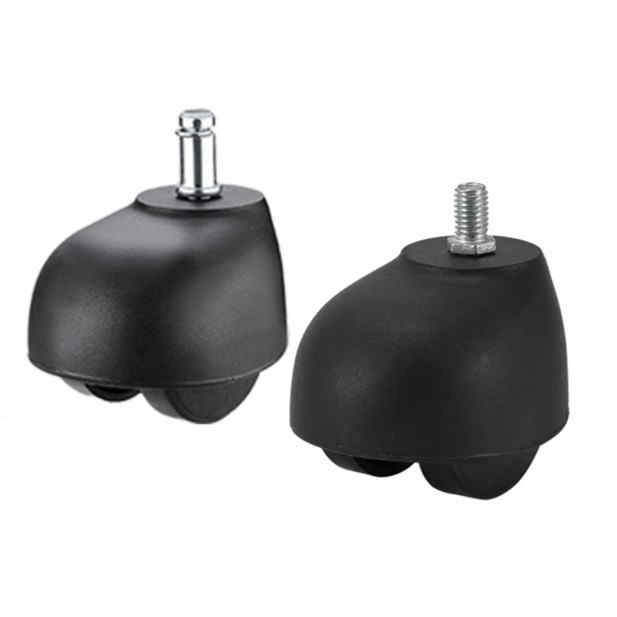
Installing bed castors is straightforward and requires minimal tools. Follow these steps:
8.1 Gather Your Tools
- You’ll need a wrench, screwdriver, or socket tool (depending on the castor fittings).
8.2 Remove the Old Castors (if applicable)
- Turn the bed frame upside down or lift one side carefully.
- Unscrew and remove the existing castors or gliders, ensuring the mounting holes are clean and free of debris.
8.3 Prepare the New Castors
- Check that the new castors match the size and type of fittings (e.g., bolt-hole or stem).
- If the castors have screws or bolts, ensure you have the correct size.
8.4 Insert or Attach New Castors
- Push the castor stem into the socket or secure the base plate with screws. Ensure the castor fits snugly and is properly aligned.
8.5 Tighten the Fittings
- Use the appropriate tool to tighten the screws or bolts securely. Avoid over-tightening, as this may damage the frame or castors.
8.6 Test the Mobility and Locks
- Roll the bed to ensure all castors move smoothly. If locking castors are installed, engage the locks to confirm functionality.
8.7 Inspect for Stability
- Check that the bed is level and stable on the floor. Adjust or reposition the castors if necessary.
9. Tips for Maintaining Bed Castors
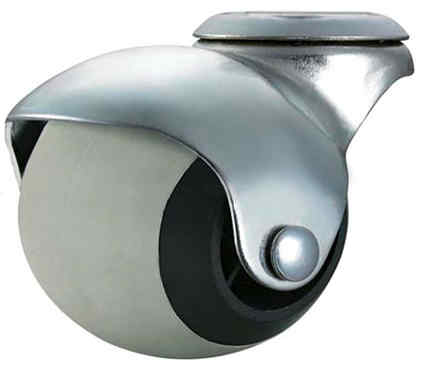
Regular maintenance of your bed castors ensures smooth functionality and extends their lifespan. Here’s how to keep them in top shape:
9.1 Clean Regularly
- Dust and debris can accumulate in the wheels, causing them to jam or become less efficient. Use a cloth or vacuum cleaner to clean around the castors every few weeks.
9.2 Lubricate Moving Parts
- Apply a small amount of grease or lubricant to metal components and bearings to reduce friction and ensure smooth movement. Avoid over-lubrication, as this can attract dust.
9.3 Inspect for Wear and Tear
- Check the wheels, sockets, and fittings for cracks, dents, or loose screws. Replace any damaged castors promptly to avoid uneven movement or damage to floors.
9.4 Tighten Fittings
- Over time, screws and bolts may loosen. Periodically check and tighten them to ensure the castors remain securely attached to the bed frame.
9.5 Replace When Necessary
- If the wheels become stiff, damaged, or no longer roll smoothly, replace them with a similar size and type to maintain bed mobility and safety.
10. Conclusion
Bed casters are a great way to make your bed easier to move, protect your floors, and keep you safe. But they’re not just for function. Vintage bed casters look cool and add a nice touch to your bed. That’s why people who care about design love them. If you pick the right kind, material, and size, and put them on the right way and take care of them, your bed casters will work great for a long time.
For more questions or needs, reach us at:
Email: info@techincastor.com
Tel/WhatsApp: +86 13417057114

